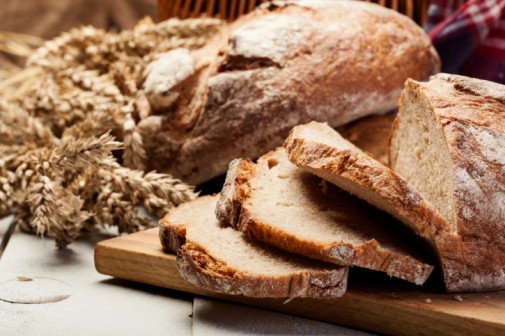Whole grains may help us live longer

We already know that whole grains are good for us. Could they also actually help us live longer? A new study says yes.
Researchers looked at the eating habits of almost 120,000 people over several years. They found that eating just 28 grams of whole grains every day – the same as just one slice of 100% whole wheat bread – lowers your risk of death by five percent. People suffering from heart disease lowered their risk of death even more, dropping it nine percent.
The researchers think the higher bran intake may be responsible. Bran is rich in fiber, which may reduce the risk of heart disease as well as other chronic conditions like metabolic syndrome and diabetes.
Heart disease is a leading cause of death in the United States for both men and women. Every year, 600,000 Americans die from it, says the American Heart Association.
According to the Center for Disease Control (CDC), there are many things that make your risk of heart disease higher. They include diabetes, being overweight or obese, not eating well, not exercising regularly and drinking excessively.
“Knowing what increases the risk of heart disease and heart attack is a key to avoiding these life-threatening conditions,” says Abdul Ghani, MD, a cardiologist on staff at Advocate South Suburban Hospital. “This study shows us that something as easy and simple as increasing our intake of whole grain can have a very real positive impact on the health and overall health.”
In addition to including whole grains as part of a healthy diet, lowering your blood pressure and keeping cholesterol in check can also lower your risk for heart disease.
The CDC points out that nearly 2 out of 3 adults with high cholesterol and about half of adults with high blood pressure don’t have their condition yet under control.
“It’s very important that people take active ownership in their own health,” says Dr. Ghani. “They need to be aware of what’s going on with their bodies and be ready and willing to make changes, such as eating more whole grains, to decrease chances of serious health issues.”
The USDA’s Center for Nutrition Policy and Promotion offers these tips for increasing the amount of whole grains you eat:
- To eat more whole grains, substitute a whole-grain product for a refined product – such as eating whole-wheat bread instead of white bread or brown rice instead of white rice. It’s important to substitute the whole-grain product for the refined one, rather than adding the whole-grain product.
- For a change, try brown rice or whole-wheat pasta. Try brown rice stuffing in baked green peppers or tomatoes and whole-wheat macaroni in macaroni and cheese.
- Use whole grains in mixed dishes, such as barley in vegetable soup or stews and bulgur wheat in casserole or stir-fries.
- Experiment by substituting whole wheat or oat flour for up to half of the flour in pancake, waffle, muffin or other flour-based recipes. They may need a bit more leavening.
- Use whole-grain bread or cracker crumbs in meatloaf.
- Try rolled oats or a crushed, unsweetened whole grain cereal as breading for baked chicken, fish, veal cutlets or eggplant parmesan.
- Try an unsweetened, whole grain ready-to-eat cereal as croutons in salad or in place of crackers with soup.
Related Posts
Comments
3 Comments
About the Author
health enews staff is a group of experienced writers from our Advocate Health Care and Aurora Health Care sites, which also includes freelance or intern writers.


















Is this at odds with the Paleo diet???
Great suggestions – many people malign all carbs, lumping in white bread with oatmeal. However, it is widely known that whole grains help the digestive system, reduce risks of cancers, and help cholesterol and heart disease. Whole grains should be part of a healthy diet. The key component, fiber, is often missing from the highly processed foods that pass for grains in today’s diet. The more rough the grain, the better. For example, try bulgur instead of bread, try steel cut oats instead of instant oats, and have popcorn which is air popped (this is also a whole grain!). Shredded wheat cereal is a whole grain and much better than the processed garbage that passes for cereal. Other great sources of fiber include fruits/berries, nuts/seeds, and vegetables. I truly believe these foods are the only ones to consume. Leave aside meat, cheese, egg, yogurt, dairy, and oils – these foods don’t contain any fiber and only lead to disease, disability and death.
Addendum: I left out beans – beans, peas, and lentils are legumes and pack a great protein and fiber punch, and are actually resistant carbohydrates and definitely reduce the risk of diabetes and control blood sugar. No need for meat, cheese, egg, yogurt, milk, and oil if you eat beans also – this completes a complete family of nutrients, proteins, and fiber. See thepowerplate.org for more information on these food groups.